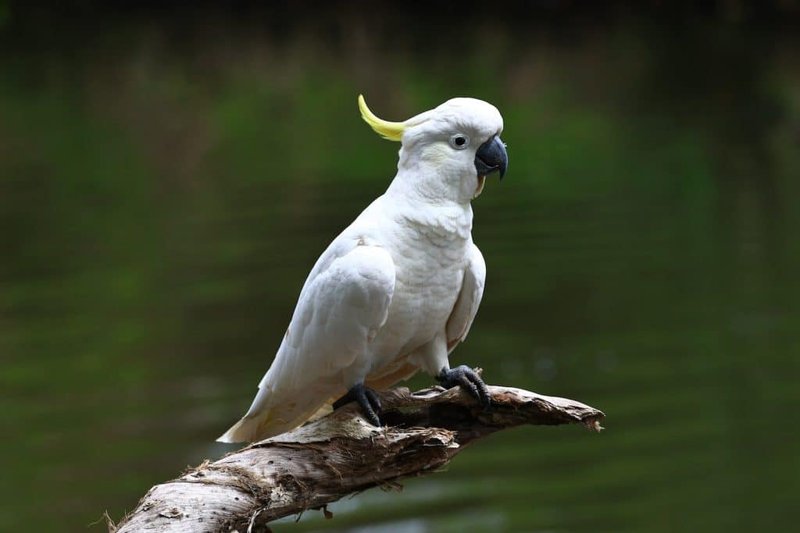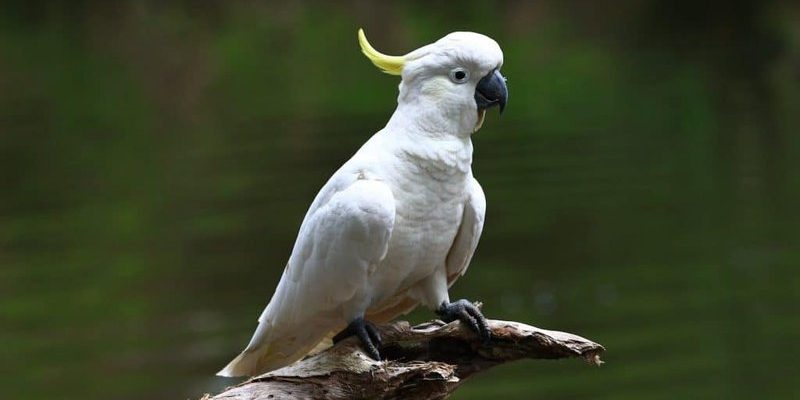
So, why should you care about these feathered chatterboxes? Well, if you’re considering adopting a cockatoo or if you already have one, being clued in on their vocalizations can enhance your bond and help you provide better care. It’s like having a backstage pass to their world!
Why Cockatoos Vocalize
Cockatoos are social creatures, and vocalization is one of their primary ways of communicating. Think of them as the social butterflies of the avian world. They use their voices to express everything from joy and excitement to stress and frustration.
Additionally, vocalizing is a way for cockatoos to assert their presence and establish territory. In the wild, these birds don’t just chirp randomly; they’re communicating with their flock. This means that when your pet cockatoo makes noise, it’s not just for fun—it’s often part of their instinctive behavior. They might be trying to engage with you, alert you of something outside, or simply share their feelings.
By understanding why they vocalize, you’ll be better equipped to respond in a way that meets their needs. It’s essential to remember that while their sounds can be adorable, they serve significant purposes in their lives.
Common Cockatoo Sounds and Their Meanings
Cockatoos have a variety of vocalizations, each with its own meaning. Here’s a quick breakdown of some common sounds you might hear:
- Squawking: This loud, often harsh noise can signal excitement or a call for attention. It’s like them saying, “Hey, look at me!”
- Whistling: If you hear soft whistling, it usually indicates calmness or happiness. It’s their way of sharing good vibes with you.
- Chattering: Constant chattering often means your cockatoo is content and enjoying the moment. Imagine a friend happily catching you up on everything!
- Crying: If your cockatoo starts to cry, it may be a sign of distress or loneliness. They can become very attached to their human companions.
Recognizing these sounds can help you respond appropriately. If your cockatoo is squawking for attention, maybe it’s time for a play session. If they’re whistling happily, they’re likely feeling relaxed and content—so you can just enjoy that moment together.
Cockatoo Body Language and Vocalization Connection
Interestingly, vocalizations often go hand-in-hand with body language. Just like humans, cockatoos communicate with more than just words. If you notice your feathered friend letting out a loud squawk while flapping their wings, they might be excited or trying to show off. It’s their way of saying, “Look how cool I am!”
Conversely, if they’re making softer sounds while huddled in a corner, that could indicate they’re feeling anxious or scared. Observing their body language can provide context to their vocalizations—it’s like reading between the lines of their “conversation.”
For instance, if your cockatoo stands tall with its crest raised and vocalizes loudly, it’s likely feeling confident and energetic. But if it crouches low with a drooped crest while vocalizing, it might feel threatened. Paying attention to these cues can improve your relationship immensely, helping you respond in ways that make your cockatoo feel safer and loved.
Vocalization Changes with Age and Environment
As cockatoos age, their vocalizations can change. Young cockatoos often mimic sounds and phrases from their environment, which can be a delightful (or sometimes hilarious) experience for their owners. You might hear them trying out new words or phrases they’ve picked up from family members or even the TV.
On the flip side, older cockatoos might lose some of their vocal charm due to health issues or changes in their environment, such as moving to a new home. It’s essential to keep an eye on these changes. If your cockatoo suddenly becomes quieter or stops vocalizing altogether, it could signify distress, boredom, or even illness.
Creating a stimulating environment can help maintain their vocal nature. Engaging toys, a comfortable space, and regular interaction can encourage them to vocalize more. It’s all about providing that enriching backdrop for their vocal performances!
How to Encourage Healthy Vocalization
If you want your cockatoo to be more vocal (in a healthy way), consider these tips. Think of it like encouraging a friend to join in on the conversation.
1. Social Interaction: Spend time talking, singing, or whistling to your cockatoo. They love socializing and will often mimic sounds they hear regularly.
2. Toys and Enrichment: Provide a variety of toys and activities to keep your bird mentally stimulated. Boredom can lead to less vocalization, so keep things fresh and exciting.
3. Positive Reinforcement: When your cockatoo vocalizes in a way you like, offer praise or a treat. This encourages them to keep chatting!
4. Routine: Birds thrive on consistency. Having a regular playtime or interaction schedule can help your cockatoo feel more comfortable vocalizing.
Remember, the goal isn’t just to have noise in your home but to foster a joyful and healthy vocal relationship with your cockatoo.
The Challenges of Cockatoo Vocalization
While vocalizations can be delightful, they can also become a challenge. For some owners, loud and frequent sounds can be overwhelming. If your cockatoo seems to be excessively vocal, here’s what to consider:
– Boredom: If your bird is making a racket, they might just be bored and looking for attention. Make sure they have plenty to do.
– Stress or Illness: Sometimes, changes in vocal behavior can signal stress or health issues. Regular check-ups with an avian vet can help identify and address any underlying problems.
– Nighttime Noises: Cockatoos are crepuscular, which means they’re at their most active during sunrise and sunset. If your cockatoo is noisy at odd hours, consider covering their cage at night to help them settle down.
In any case, it’s all about finding a balance. While the sounds are part of their charm, ensuring they’re healthy and happy is the top priority.
Understanding cockatoo vocalizations can enrich your relationship with these amazing birds. It’s like unlocking a special code that allows you to connect with them on a deeper level. By paying attention to their sounds and body language, you can respond to their needs and make your home a happier place for both you and your feathered friend.
Remember, every cockatoo is unique. What works for one might not work for another, so be patient as you decode their vocalizations. With a little observation, love, and care, you’ll both be singing the same tune in no time!

